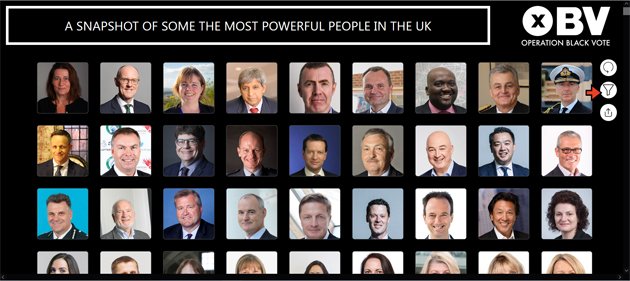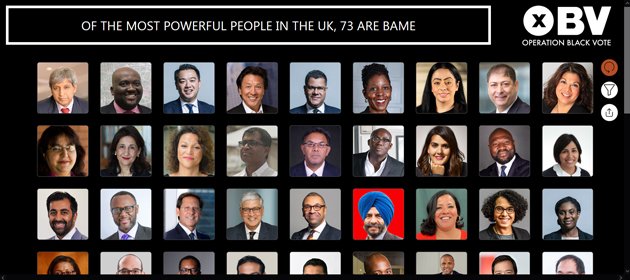- Home
- News & Blogs
- About Us
- What We Do
- Our Communities
- Info Centre
- Press
- Contact
- Archive 2019
- 2015 Elections: 11 new BME MP’s make history
- 70th Anniversary of the Partition of India
- Black Church Manifesto Questionnaire
- Brett Bailey: Exhibit B
- Briefing Paper: Ethnic Minorities in Politics and Public Life
- Civil Rights Leader Ratna Lachman dies
- ELLE Magazine: Young, Gifted, and Black
- External Jobs
- FeaturedVideo
- FeaturedVideo
- FeaturedVideo
- Gary Younge Book Sale
- George Osborne's budget increases racial disadvantage
- Goldsmiths Students' Union External Trustee
- International Commissioners condemn the appalling murder of Tyre Nichols
- Iqbal Wahhab OBE empowers Togo prisoners
- Job Vacancy: Head of Campaigns and Communications
- Media and Public Relations Officer for Jean Lambert MEP (full-time)
- Number 10 statement - race disparity unit
- Pathway to Success 2022
- Please donate £10 or more
- Rashan Charles had no Illegal Drugs
- Serena Williams: Black women should demand equal pay
- Thank you for your donation
- The Colour of Power 2021
- The Power of Poetry
- The UK election voter registration countdown begins now
- Volunteering roles at Community Alliance Lewisham (CAL)
The Colour of Power 2021
When Operation Black Vote launched The Colour of Power back in 2017, we hoped that the stark visualisation of what power looked like both in racial and in gender terms would begin an inexorable conversation and that would lead to inevitable positive change. In truth the stark realisation wasn't enough. Our then media partners The Guardian - gave the project unprecedented coverage - some 10 pages and three podcasts of coverage, but by 2020, three years later our data shows little had changed.
However, in the past 12 -18 months the dial is beginning to move more quickly than ever before. So, today a snapshot now compared to four years ago shows a doubling of the number of British Black, Asian, and minority ethnic faces in very high places. In 2017 we were at 36, today it's 73, double.
The greatest shift has been in politics, which has seen significant and positive changes from both Labour and the Conservatives, with the Prime Minister appointing a record number of BAME Cabinet members (6) and Ministers (7) to his Government. Whilst the Labour boasts a record number of BAME Mayors (4) and Council leaders (11) all of which is particularly pleasing for us at Operation Black Vote as we celebrate our 25th anniversary this month.
Other small but significant changes can be seen in areas such as Vice Chancellors (6) NHS trusts (3) Consultancy firms (3) and FTSE 100 firms (6) and Trade Unions (2)
In terms of which ethnic groups have seen the biggest increase it has be Asian men. But overall BAME women have jumped from a low base of (7) to a record number of (18)
Women in general have moved up, but again not as far as one would expect in a four year period, from 23% to 27%.
So what can we understand from this unique data set that gives us a snap shot of what power looks like in the UK?
Overall it tells us that progress is too often very slow. And one could argue that without some of the biggest and longest protest about race inequality- BLM- progress would have been even slower.
The data also tells us that some areas are just stuck with no change or if it is its glacial such as Permanent Secretaries, Public Body Chiefs, CEOs of Business organisations, Members of the Defence Council, Heads of the Intelligence Agency, Chief Constables, and TV execs all (0)
When we look at the data and when the change began in earnest we can clearly see a correlation between how slow change began from 2017 to 2020 from 36 to around 50, and then in the last year or so the numbers jumped from 50 to 73. This represents a movement of 5 per year for the first three years then a jump of 23 in the last year.
Once suspects that the unprecedented Black Lives Matter protest that was in fact the longest and largest race equality protests ever seen in the UK dramatically focused people's attention to the barriers or pathways to the top jobs. There is no question of doubt that society as whole but specifically in business, academia , political and civic arenas our nation begun some of the most profound conversations about who we are, what we look like at all levels and above how we might implement change.
Some of the conversations that were had, and I attended many were at times difficult, uncomfortable, as BAME staff were empowered to lay bare their lived experience to bosses, who were frankly shocked at the level and depth of inequalities they were blind right on their door step. This data shows that with that social political backdrop people have looked around and with more open eyes have seen a deluge of talent that was too often overlooked.
And whilst this is but a snap of what is going my own anecdotal evidence having conversed throughout the spectrum of the COP categories, change below this very senior level is also afoot.
The million dollar question is; can we keep this momentum going? That answer is not clear cut and for a number of reasons. First we have Government, or at least aspects of Government who are not only in denial of the challenge to tackle systemic racism, but at times pitting those- Footballers taking the knee, and the Black Lives Matter movement, as distinct from its more political offshoot, to be seen as enemies of the white working class. Crudely characterised as 'Culture Wars', which is ironic because it has nothing to do with culture. But worse still some Black and Asian politicians are willing to put themselves on the front line of faux culture wars.
But if those in Government abandon the phoney that only divides communities and breeds racial hatred and engages in the meaningful conversation about how are institutions built in the past are still delivering great inequalities in present then we can begin to reform or rebuild in a way that gives us a realistic opportunity to unleash a deluge of talent and ensure we have sustainable pipes of talent for generations to come.
The Colour of Power uniquely gives our society a frame work for that discussion and potential change. As architects of this design we are very much aware that whist OBV has a particular interest in race quality, this format gives us the potential to slice and dice the data for other sectors including gender, class, disability, LBGTQ+, geography and much more.
But as we said back in 2017 and we say it even louder today, our biggest challenge will be denial of the problem. Having this profound conversations about where we are, what are the barriers formulating a plan to close inequality gaps will have a profound impact on our society.
When diversity flourishes particularly at the top, but also throughout decisions to solve some of our societal challenges, unemployment, poor health, generating wealth equitably are better served.
We at OBV hope that The Colour of Power 2021 helps keep this renewed positive momentum for change on the right track. If we're getting the top right it's more likely we are changing the organisations culture, and with that transformation throughout.
The North Star for this change is to unleash talent, and build a fairer society
Simon Woolley and Rita Patel
https://thecolourofpower.co.uk/


